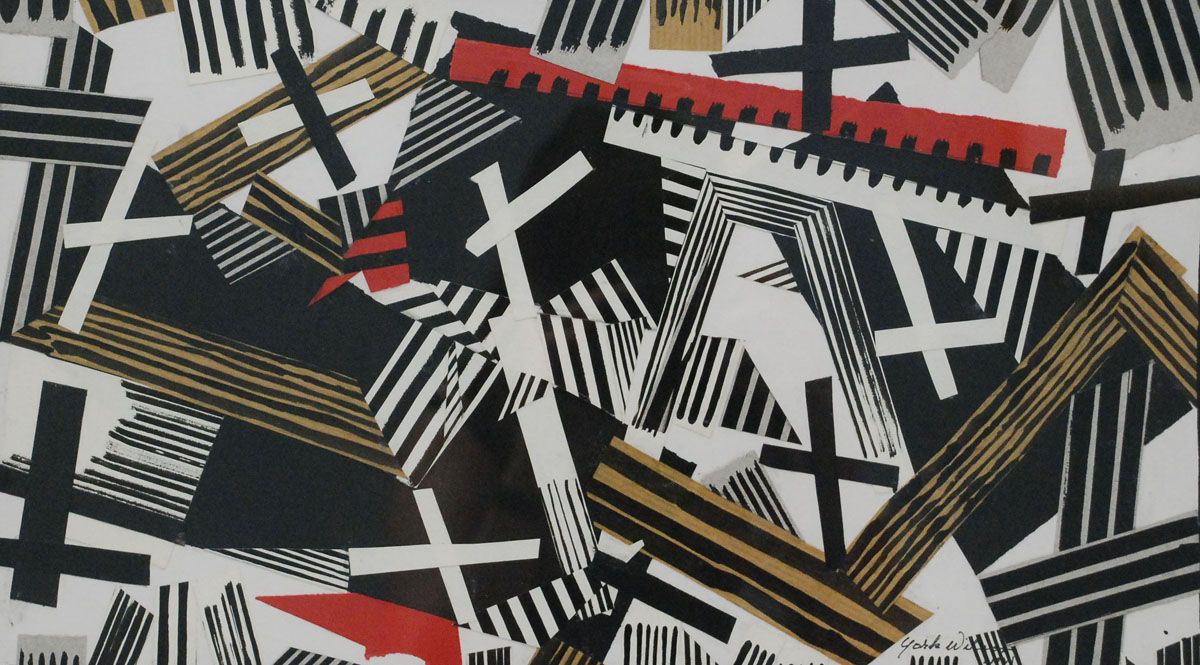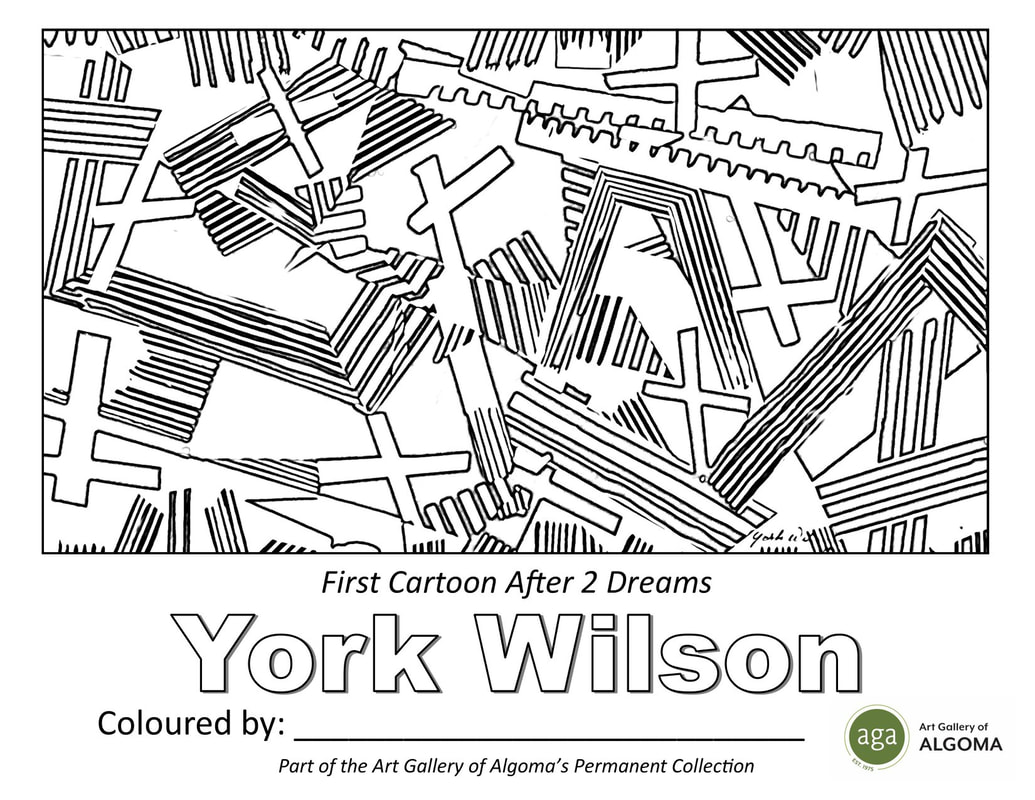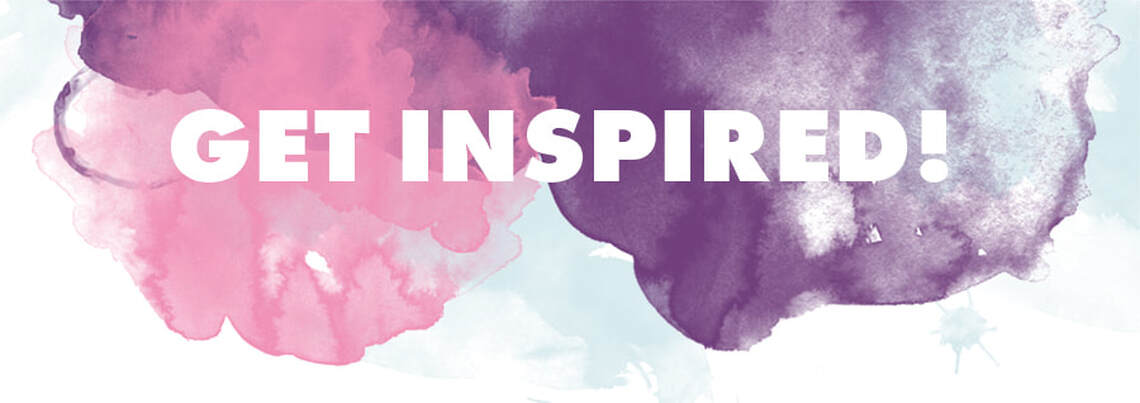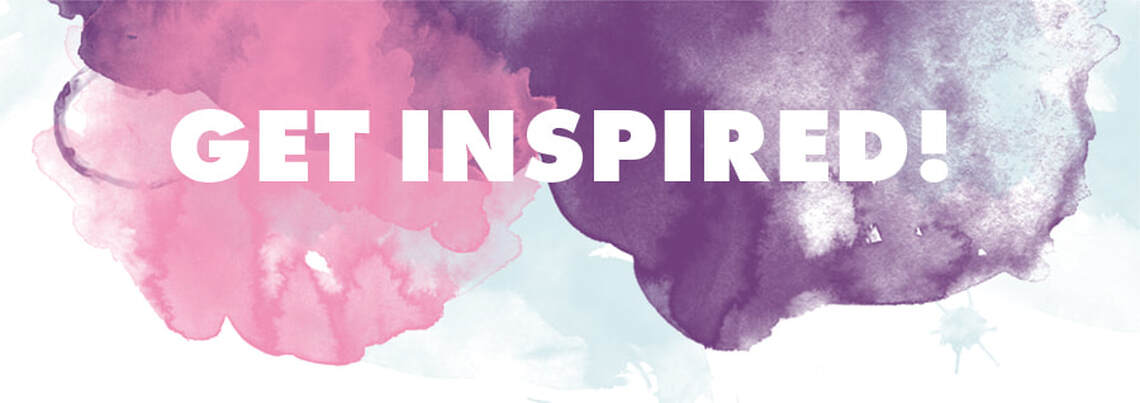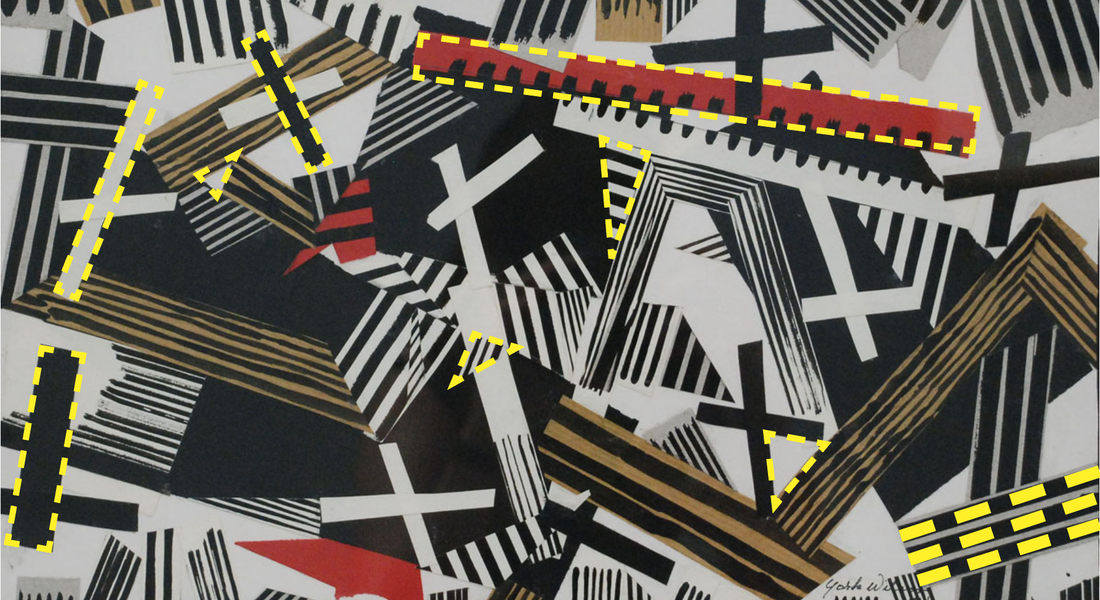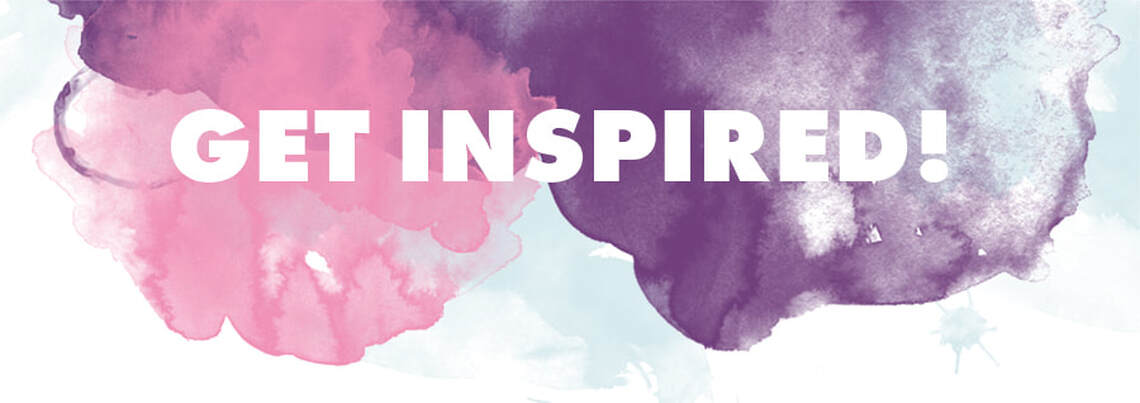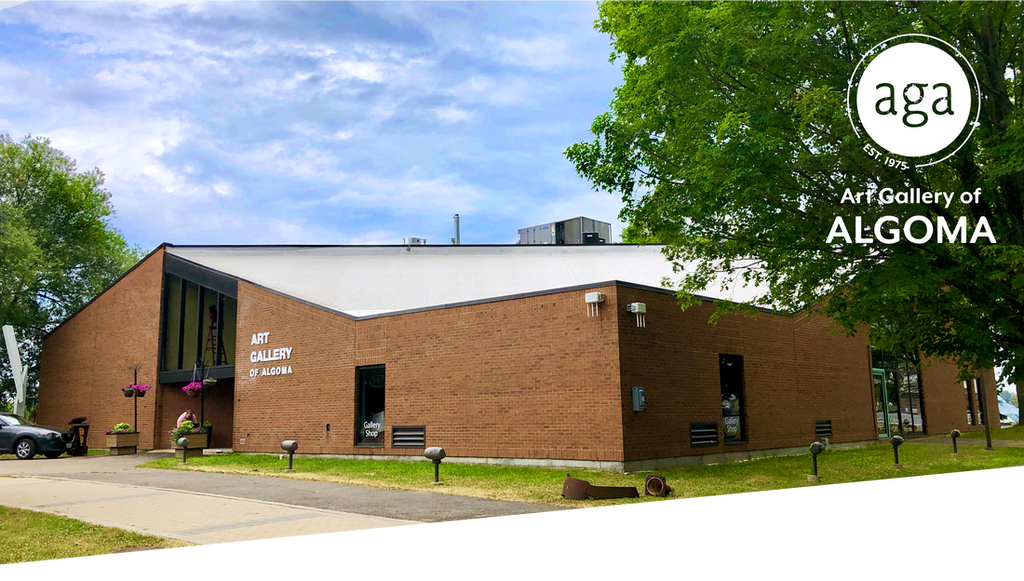<
>
York Wilson worked as a commercial artist on Toronto. He developed skills in a variety of media, providing him with a solid technical foundation for his subsequent career as an independent artist. York Wilson was commissioned to paint a mural for the entrance of the new Imperial Oil Building in Toronto in 1954. The mural was completed in 1957, and was praised by A.Y. Jackson and Lawren Harris. During a trip to Paris in 1966, Wilson had two dreams of geometric painting. Geometric paintings became his style for some time following the two dreams. He noted that between 1966-1971 he found himself unable to paint in any other style. Wilson travelled extensively and spent a lifetime researching and experimenting with new media, advanced painting techniques, and fresh approaches which resulted in a highly eclectic body of work. York Wilson was a Canadian artist who became known for his large-scale murals and semi-abstract style. From 1924 Wilson worked as a commercial artist in several Toronto firms, where he worked alongside Franklin Carmichael and A.J. Casson, both members of the Group of Seven. Some of his influcences included Canadian artists; Peter Haworth, Will Ogilvie and Charles Comfort (Canadian group of Painters). In the late 1920s, Wilson left for Detroit where he worked as a commercial artist until the Great Depression. He returned to Toronto in 1930. The following year he had the opportunity to exhibit for the first time with the Canadian Society of Graphic Arts. During the 30s York Wilson continued to work as a commercial artist and exhibit his artwork. In 1942 Wilson became a member of the Ontario Society of Artists (OSA) and the society's President in 1946. In 1947 Standard Oil, a New Jersey company, commissioned Wilson to record the move of their refinery from Whitehorse to Edmonton, over the Alaska Highway, by truck. The following year some of the paintings were exhibited in an exhibition arranged by Imperial Oil. In 1949 Wilson visited Mexico and spent time in San Miguel, as did many other Canadian artists. This trip changed Wilson and he decided to step away from commercial art for good and dedicate his focus to painting full time. As a muralist painter, his career was successful in experimenting with new ways of painting, often visiting Mexico to learn about varied materials and new techniques. York Wilson received one of his largest commissions in 1954. He was hired to paint a mural for the entrance of the new Imperial Oil Building in Toronto. It took him a year to do preliminary drawings. He was also commissioned to paint the Salvation Army mural in 1955. The work on the Imperial Oil Building started in 1956; he had two assistants and the mural was finished in 1957. This mural received lots of praise, including that of A.Y. Jackson. In the summer of 1959, York Wilson received a letter from Lawren Harris (one of the founding members of the Group of Seven). Harris had seen the Imperial Oil mural and had written Wilson a letter. He wrote: I found that your vision and interpretation of the theme was equally matched by its exciting and excellent execution. To me, it is a most stimulating and compelling major creative effort, and one which very well could prove to be a milestone in Canadian art. Wilson’s mural was a huge success and special moment to be remembered in Canadian art. In November 1958 York Wilson was commissioned to complete a mural for the lobby of the new O’Keefe Centre (which was still under construction at the time). The mural was 100 feet by 15 feet and the theme was The Seven Lively Arts with references to music, dance, painting, sculpture, architecture, literature and theatre. The mural was completed in May of 1960, and the greatly successful opening gala of the O’Keefe Centre was on October 1, 1960. Wilson travelled frequently. During a significant trip to Paris in 1966, Wilson had two dreams of geometric painting in colour, which were so clear that he painted immediately upon waking. Wilson was so absorbed in geometric paintings, known for their striped hard-edge compositions, rhythmic design and bold colour, that it became his style for some time following the two dreams. He noted that between 1966-1971 he found himself unable to paint in any other style. York Wilson (1907-1984) was born in Toronto. He studied at the Central Technical School for two years, and took art classes in the evenings at the Ontario College of Art. In 1932 he married his wife Lela. Wilson’s creativity led him to live a semi-nomadic way of life, travelling extensively across the world. In 1949 Wilson visited Mexico and spent time in San Miguel, as did many other Canadian artists. In the early 1950s Wilson travelled all over from Paris to the Caranary Islands to Morocco. Following the creation of the Imperial Oil mural in 1957, Wilson and his wife traveled to Europe again, this time visiting Spain, the Canary Islands, Italy, France and Belgium. Wilson found that his travel aided him to find himself as well as explore new concepts within his work. |
GET INSPIRED
Colouring Sheet
Print off, colour in, and make it your own! Share your creations on our Art and Discovery Facebook event page.
| ywilsoncolouringsheet.pdf | |
| File Size: | 1226 kb |
| File Type: | |
Get Inspired To Collage
Try this creative activity based on the artwork! Share your creations on our Art and Discovery Facebook event page.
York Wilson used collage in some of his works. Use the bright colours and interesting shapes in his works as inspiration to create your own collages!
SUPPLIES
- Scissors (ask for help from an adult!)
- Glue
- Paper to collage on
- Collage materials: you can use scrap paper, magazines, or newspapers, fabrics, or anything you can find around your house just make sure to ask first!
- Colouring pencils, crayons, markers, or paints
INSTRUCTIONS
- Start by collection your materials. Try to find collage materials with interesting patterns or designs you enjoy. If you can't find any interesting patterns you can make your own by drawing patterns on paper!
- Think about some interesting shapes to cut your papers or fabrics into. Draw the shapes on your materials and then cut them out. You can have a lot of different shapes, or make your shapes the same.
- Plan your collage before you start gluing. Try moving all of the pieces around to see the different ways that you can put your collage together.
- Glue all of your pieces on a sheet of paper that is big enough for your design.
Tip – Make sure that you cover the whole back side of the collage pieces with glue to make sure that your edges stick down properly. If you're using white glue don't use too much; a little goes a long way! - When you are finished gluing your collage pieces, wait for the collage to dry. Trim the edges of your collage to get rid of any edges sticking out.
Now you're done! Admire your work and don't forget to share your artwork on our event page. We can't wait to see what you create!
Get Inspired By Shapes
Try this creative activity based on the artwork! Share your creations on our Art and Discovery Facebook event page.
Use the shapes and lines in First Cartoon After 2 Dreams by York Wilson to create your own artwork!
|
SUPPLIES
INSTRUCTIONS
1. Start by drawing these shapes on a piece of paper.
(Tip – draw lots of shapes. Draw some of the shapes big and some small, draw them in different places on the page). 2. Be inspired! Let your imagination go wild, and add more details to the shapes to make them into a drawing of something that you like. It could be your pet, a friend, your favourite place, your favourite character from a story, or your favourite thing!
Now You’re done! Admire your work and don’t forget to share your creations on our event page. We can’t wait to see what you created! |
Get Inspired To Write
Try this creative activity based on the artwork! Share your creations on our Art and Discovery Facebook event page.
Write a short story inspired by First Cartoon After 2 Dreams by York Wilson!
|
SUPPLIES
INSTRUCTIONS
Now You’re done! Admire your work and don’t forget to share your creations on our event page. We can’t wait to see what you created! |

